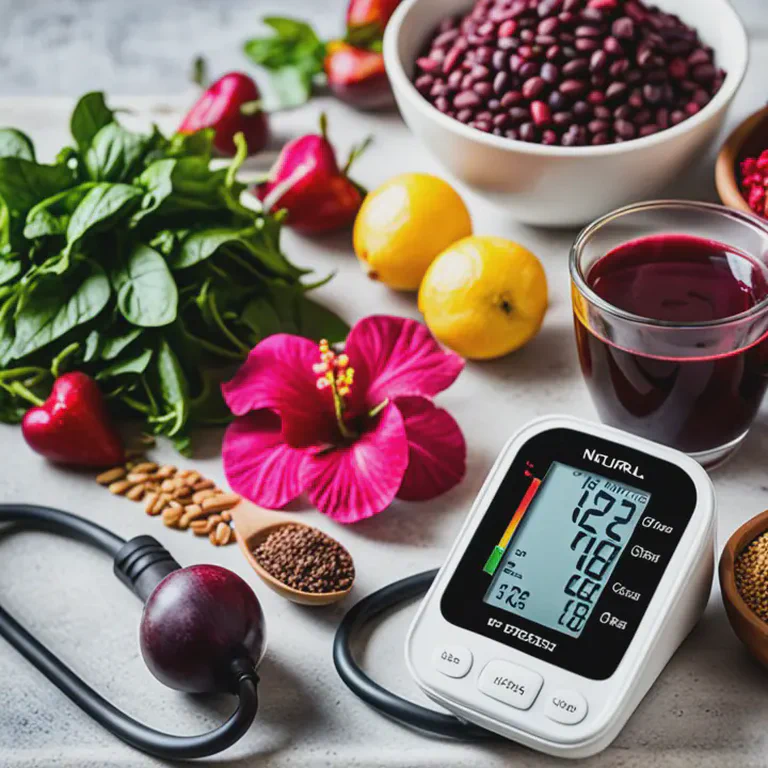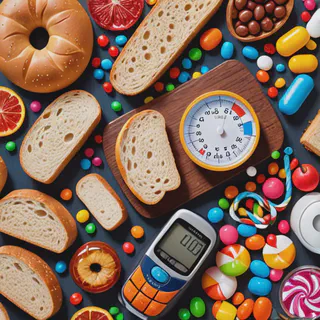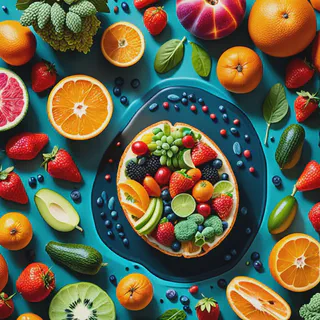Many individuals live with dangerously high blood pressure, often unaware of the risks or believing it to be inconsequential. This silent condition can lead to life-altering consequences if left unaddressed. In this comprehensive guide, we'll explore effective strategies for managing high blood pressure, emphasising the significance of diet and lifestyle while acknowledging the limitations of medication-only approaches.
The Underestimated Threat of High Blood Pressure
Beyond "White Coat Syndrome"
The notion that elevated blood pressure readings solely in a doctor's office, known as "white coat syndrome," is harmless has been proven incorrect. This temporary spike can indicate an underlying tendency towards hypertension and increases the risk of future cardiovascular problems. Ignoring this phenomenon can result in missed opportunities for early intervention.
The Limitations of Medication-Only Approaches
Relying solely on blood pressure medication often serves as a temporary "plaster" for an underlying lifestyle issue. There is no single "magic pill" to rectify unhealthy habits. Consider these concerning statistics:
- Approximately 75% of people with high blood pressure do not have it under control
- Around 50% of individuals will eventually experience failure with single-drug treatment for hypertension
- Many patients struggle with medication adherence due to side effects or a general aversion to taking drugs
Common blood pressure medications can have undesirable side effects:
- Water pills (diuretics): Electrolyte imbalances
- Calcium channel blockers: Increased breast cancer risk
- Beta blockers: Lethargy and impotence
- ACE inhibitors: Angioedema
This aligns with our previous discussions on the importance of addressing root causes rather than just symptoms, as we explored in our article on Gut Health & Chronic Pain Management.
The Profound Impact of Diet on Blood Pressure Regulation
You truly are what you eat, and managing blood pressure fundamentally begins with dietary choices. Consuming foods high in sugar, refined grains, and saturated fats can negatively affect blood pressure. Conversely, incorporating specific "antidote" foods rich in nitric oxide, antioxidants, and fibre can significantly contribute to lowering blood pressure.
Top 10 Foods to Reduce Blood Pressure
1. Flax Seeds: "Brown Gold"
Even a small daily intake of flax seeds can lead to significant reductions in blood pressure, potentially dropping diastolic pressure by seven points. This seemingly modest reduction is associated with:
- 46% fewer strokes
- 29% fewer heart disease cases over time
Unlike medication, flax seeds offer a multitude of "side benefits" including:
- Lower cholesterol
- Reduced triglycerides
- Better blood sugar control
- Decreased inflammation
- Constipation relief
- Anti-cancer properties
2. Hibiscus Tea
This antioxidant-rich "bright red flower" drink has demonstrated the ability to lower blood pressure by about six points. Remarkably, a "head-to-head trial with captopril" found hibiscus tea to be "just as effective as the starting dose of captopril."
Even small reductions in blood pressure, such as five points, can lead to:
- 14% reduction in stroke risk
- 9% decrease in fatal heart attacks
- 7% lower overall mortality
3. Leafy Greens (especially Rocket)
Rocket (arugula) is identified as a "No. 1 superfood" for lowering blood pressure due to its high nitric oxide content. Nitric oxide helps blood vessels relax and improves blood flow without the negative side effects associated with some medications.
4. Beetroot and Beetroot Greens
Daily consumption of beetroot juice has been shown to potentially reduce blood pressure by eight points over four weeks. Beetroot greens are also rich in nitric oxide.
5. Basil
Similar to the dietary habits of Italians, consuming basil is encouraged due to its richness in nitric oxide and other antioxidants that can contribute to lower blood pressure.
6. Coriander
This herb (cilantro in the US) also contains nitric oxide and antioxidants, making it beneficial for blood pressure management and is often integrated into a "fusion diet."
7. Butter Lettuce
While potentially containing less nitric oxide than other herbs, it still contributes and offers a milder taste for those who find stronger herbs challenging.
8. Swiss Chard
This leafy green contains even more nitrite oxide than beetroot and can be consumed raw or cooked.
9. Whole Grains
Consuming three portions of whole grains daily can have a similar effect to water pills in lowering blood pressure without the risk of electrolyte imbalances. Unlike refined grains, whole grains retain the bran and germ, providing essential fibre and nutrients.
Replacing even a third of a serving of white rice with a whole grain daily can reduce the risk of diabetes by 16%.
10. Berries and Antioxidant-Rich Fruits
Berries, particularly blueberries and strawberries, are packed with antioxidants that help protect blood vessels and reduce inflammation, contributing to better blood pressure control.
This focus on whole foods aligns with our holistic approach to health, similar to what we've discussed in our article on Gut Power Unleashed: Personalized Roadmap to Systemic Wellbeing.
The Crucial Role of Nitric Oxide
Nitric oxide is a vital molecule that aids in relaxing and widening blood vessels, promoting healthy blood flow. Many of the recommended foods, particularly leafy greens like rocket, beetroot, basil, and coriander, are rich in nitric oxide or support the body's natural production of it.
This natural mechanism of vasodilation contrasts with the action of some blood pressure medications that function by blocking specific bodily functions, potentially leading to side effects. Boosting nitric oxide through diet offers a more holistic approach to managing blood pressure.
The connection between nitric oxide and vascular health also relates to our discussion of the gut-vascular axis in Gut-Vascular Axis: Vaccine Response & Microbiome Health.
Beyond Diet: The Importance of Lifestyle
While diet is heavily emphasised, exercise plays a critical role in managing high blood pressure. Consider this remarkable example: a person's systolic blood pressure dropped by almost 40 points in about 30 minutes by walking up and down stairs 20 times. This illustrates the immediate impact physical activity can have.
Regular exercise is considered a primary means of positively influencing blood pressure. In fact, "Exercise is the number one way to change your blood pressure."
Other lifestyle factors that can help manage blood pressure include:
Stress management: Chronic stress contributes to elevated blood pressure. Techniques like meditation, deep breathing, and yoga can help reduce stress levels, as we explored in our article on Stress Management: Gut Health & Stronger Immunity.
Adequate sleep: Poor sleep quality and insufficient sleep duration are associated with higher blood pressure. Aim for 7-8 hours of quality sleep each night.
Limiting alcohol consumption: Excessive alcohol intake can raise blood pressure. Moderation is key.
Quitting smoking: Tobacco use damages blood vessels and can lead to hypertension.
Empowering Self-Monitoring: The Significance of Home Blood Pressure Measurement
Blood pressure is not a static measure; it fluctuates throughout the day based on activity, emotions, and posture. Relying solely on occasional readings at a doctor's office may not provide a comprehensive understanding of one's blood pressure patterns.
Monitoring blood pressure at home in various situations – at rest, during activity, after exercise, and even when lying down – can offer valuable insights into how blood pressure responds to different circumstances. This allows for more proactive management.
Tips for Accurate Home Blood Pressure Monitoring:
- Use a clinically proven accurate device
- Correctly align the cuff with the brachial artery
- Sit with your back supported and feet flat on the floor
- Rest for 5 minutes before taking a reading
- Take readings at the same time each day
- Record your readings to track patterns over time
This approach to self-monitoring aligns with our philosophy of taking an active role in your health, similar to what we discussed in Tracking Gut Health: Apps & Tools for Monitoring Digestive Wellness.
Understanding Blood Pressure Through Analogies
The Credit Card Debt Analogy
High blood pressure is like "credit card debt" – it can remain "out of sight, out of mind" until a catastrophic event occurs, similar to accruing high interest and damaging one's credit score with unpaid balances.
The Goldilocks Principle
Maintaining blood pressure within a healthy range is like the "Goldilocks of your cardiovascular system" – not too high, not too low, but just right.
The Unleaded Car Comparison
Putting "bad food" into the body is like putting diesel fuel into an "unleaded car" – it can cause serious damage, just as deviations from normal blood pressure can lead to long-term health issues.
Historical Context: Learning from the Past
The case of President Franklin Delano Roosevelt (FDR), who suffered a fatal stroke due to decades of high blood pressure before effective medications existed, underscores the dangers of unmanaged hypertension.
In the 1940s, physicians could only recommend rest, massage, UV light, laxatives, and avoiding straining. Today, we have a much better understanding of hypertension and more tools to address it, though the emphasis on diet and lifestyle should be greater.
Integrating Blood Pressure Management with Gut Health
Emerging research suggests a connection between gut health and blood pressure regulation. The gut microbiome may influence blood pressure through several mechanisms:
- Production of short-chain fatty acids: Beneficial gut bacteria produce compounds that can help regulate blood pressure
- Inflammation reduction: A healthy gut microbiome helps control systemic inflammation, which can contribute to hypertension
- Metabolism of nutrients: Gut bacteria help process nutrients that affect blood vessel function
For more on the gut-cardiovascular connection, see our detailed article on Gut-Heart Connection: Digestive Health & Cardiovascular Wellness.
Conclusion: Empowering Individuals to Take Charge
Taking control of your blood pressure requires a comprehensive approach that goes beyond medication. By understanding the limitations of medication-only approaches, recognising the power of specific foods and regular exercise, and actively monitoring blood pressure at home, you can effectively manage this critical aspect of your health.
While pharmaceutical interventions may play a role for some individuals, addressing the root causes through sustainable lifestyle modifications offers a more comprehensive and beneficial long-term strategy for cardiovascular health.
Remember that small, consistent changes can lead to significant improvements in blood pressure over time. Start by incorporating one or two of the recommended foods into your diet, gradually increasing your physical activity, and monitoring your progress with home blood pressure readings.
Your heart health journey is unique, and the strategies that work best for you may require some experimentation and personalisation. Listen to your body, work with healthcare providers who support a holistic approach, and celebrate your progress along the way.
Further Reading and Resources
For more information on related topics, explore these articles:
- Gut-Metabolic Health Connection
- Understanding the Immune System: An In-Depth Overview
- Gut Health & Autoimmune Conditions: Exploring the Connection
Have you tried any of these natural approaches to managing blood pressure? Share your experiences in the comments below!
Disclaimer: This article is for informational purposes only and is not intended to replace professional medical advice. Always consult with a healthcare provider before making significant changes to your diet, exercise routine, or medication regimen, especially if you have existing health conditions.


